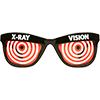There is very little reason for someone to buy an Intel CPU today. Something like a 14900k or 285 can be competitive with a 7950x/9950x from AMD and even outperform it occasionally, but why take the risk? The AMD CPUs will be faster in most multi-threaded tasks, will use less power, and do not have Intel's recent track record of issues. For gaming, again the 14900k might be top in a specific game or two, but the 7800X3D/9800X3D/7950X3D/9950X3D are faster in the vast majority of games, use a lot less power, and do not have Intel's issues.
 Burren
Burren
, there are different levels to upgrades. The Corsair system uses Intel 14th gen, which has no viable CPU upgrade path besides a faster 14th gen CPU. Both Maingear and Starforge use AMD Zen 4 CPUs (7000 series), so one could upgrade to Zen 5 available now (9000 series aka 9800X3D or 9950X), or Zen 6 in the future (which AMD has promised will be compatible).
System memory and drives can be upgraded in all systems. Maingear allows PCIe 5 NVMe drives to be a future upgrade by nature of the motherboard they use. Gen 5 drives are faster in benchmarks, but arguably not that noticeable (if at all) for gaming and general purpose usage. I suspect that both Maingear and Starforge are using DRAM-less budget drives anyway, so even a better quality Gen 4 drive like a Samsung 980 pro / 990 pro or SK Hynix P41, etc. will provide a performance upgrade path without the need for Gen 5 drive.
The biggest difference between them is the video cards.
Here is a direct comparison between the two cards. That site benches in-game (rather than canned benchmarks) so it's failry realistic. Keep in mind there is a "$150" difference between the two cards, so based on that alone one should expect the 5070ti to be faster given the price. And it is. I'd also expect some of the real outlier games that heavily favor one GPU over the other to see that gap closed a bit with future driver updates, but times have changes and often one brand or the other has a disproportionite advantage in a specific game that cannot be addressed with drivers. If there are certain games you really wanted to play with the best performance than it might be worthwhile to buy that GPU brand. Games that use full ray-tracing (path tracing) are still heavily Nvidia favored (
watch this), but the catch is that even the vast majority of Nvidia cards will suffer too since most people do not have 4080/90 or 5070ti/5080/90 class GPUs anyway. So these games still have the option to disable full RT/PT for good performance.
Nvidia has the better feature set with DLSS (versus AMD FSR). These are upscalers. They allow a game to run at a lower resolution but display at a higher resolution (for performance reasons). The goal is for the upscaler to make the game look as good as native. DLSS and FSR do a reasonable job at this and are getting better, but Nvidia's solution is a bit better quality and more widely supported. AMD with FSR4 is nearly at DLSS 4 quality, but FSR 3 is definately behind DLSS 3 in quality.
If you want all the eye-candy, one still needs a 4090 or 5090. But FWIW, many of us here use 7900XT/XTX/9070XT cards and are happy with them (myself included).
TLDR; Starforge is a fine system and one that we'd all be happy with the performance of. The Maingear system on specs alone is probably worth the extra money if the Nvidia GPU matters to you (and 850w power supply and gen 5 capable NVMe mobo). I cannot speak to quality or support from either company.

maingear.com

www.corsair.com








